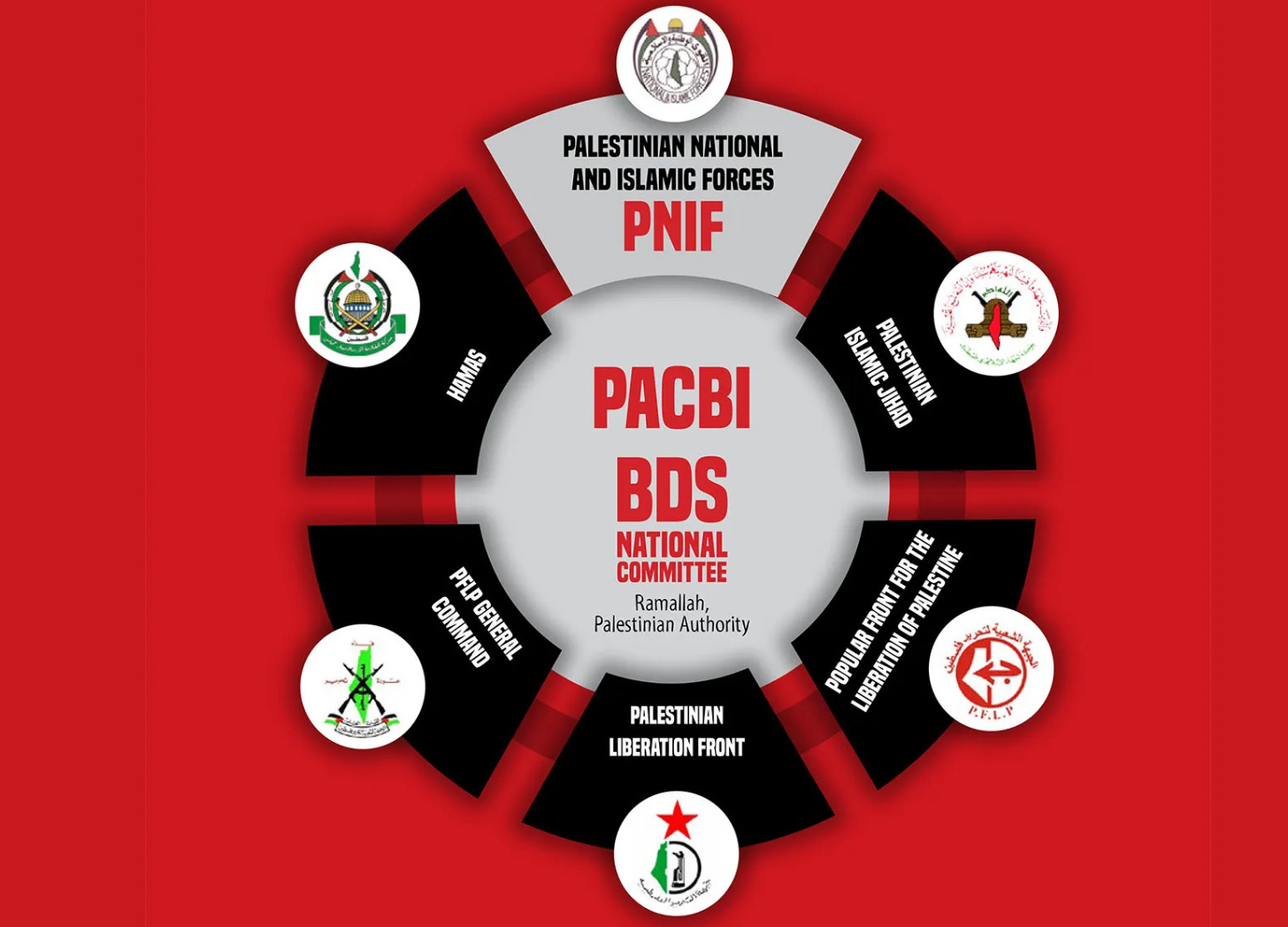Revisiting the BDS Movement's Terror Ties on its 20th Anniversary
How terrorist organizations built—and continue to direct—the self-proclaimed “grassroots” BDS campaign as it turns 20
This month marks the 20th anniversary of the Boycott, Divestment and Sanctions (BDS) movement, with a global campaign celebrating what it describes as "20 years of grassroots organizing" and "a milestone in the liberation struggle of the Indigenous people of Palestine." However, the movement's characterization of itself as grassroots obscures a more complex reality: the BDS National Committee (BNC), which serves as the movement's primary organizing body, traces its origins to multiple organizations designated as terrorist entities by the United States.
The movement's origins can be traced to Ramallah, where it emerged in large part from the Palestinian National and Islamic Forces (PNIF), a coalition encompassing five U.S.-designated terrorist organizations: Hamas, Palestinian Islamic Jihad (PIJ), the Popular Front for the Liberation of Palestine (PFLP), the PFLP–General Command, and the Palestinian Liberation Front, all united in their stated objective of Israel's destruction.
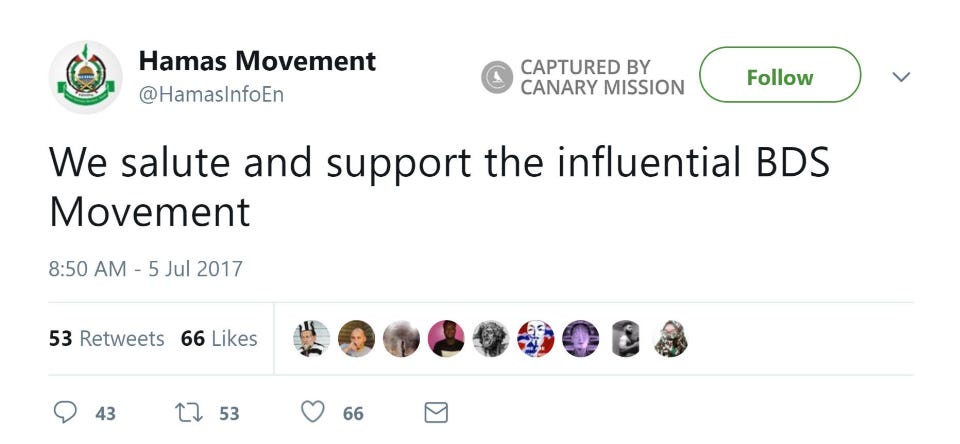
Origins: From Intifada Front to Boycott Command
PNIF emerged in 2000, at the height of the Second Intifada, tasked with “coordinating joint political actions against Israel” and uniting terror factions under one strategic front. It was led initially by Marwan Barghouti—the founder of designated terrorist group Al-Aqsa Martyrs Brigades— who is now serving multiple life sentences for orchestrating terrorist attacks that killed Israeli civilians. PNIF’s coalition listed terrorist groups such as Hamas, PIJ, and the PFLP, which were responsible for suicide bombings, rocket attacks, kidnappings, and stabbings during the same period.
Five years later, in July 2005, PNIF was the first signatory on the “Palestinian Civil Society Call for Boycott, Divestment, and Sanctions” that launched BDS. Research from the Jerusalem Center for Public Affairs underscores that PNIF “propelled the boycott strategy back in 2000 and pushed the BDS call to the higher-ups in 2005.”

Creating the BNC: A Terror-Linked Steering Committee
To operationalize the boycott campaign, Omar Barghouti and others created the BDS National Committee in Ramallah in 2007; by 2008 it was enshrined as the “principal anchor of the global BDS movement.” PNIF was reportedly installed as a permanent seat on the BNC secretariat, giving Hamas and its allies a formal vote on global BDS strategy.
Court filings in Washington, D.C. describe PNIF as “a key player inside the BNC” and note “significant overlap in PNIF/BNC personnel.” U.S. terror-victim plaintiffs allege that the U.S. Campaign for Palestinian Rights (USCPR) acted as fiscal sponsor for the BNC, thereby funneling tax-deductible funds to a body that “directly and indirectly benefits Hamas and other designated terror organizations.”
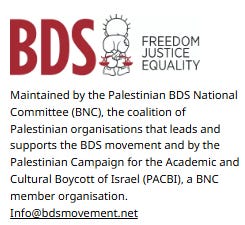
Personnel Pipeline: Terrorists in NGO Garb
The connections between BDS and terrorist organizations extend far beyond symbolic endorsements. There are over 100 links between Hamas and PFLP operatives and NGOs promoting BDS, with more than 30 terrorists—the majority of them convicted for terrorism-related crimes—holding senior leadership positions in 13 different BDS organizations.
Key Individuals
Khalida Jarrar: Senior PFLP official, BDS speaker, and lawyer convicted on multiple terror charges—including membership in an illegal organization and incitement; widely recognized as a political leader for the PFLP and repeatedly imprisoned by Israel for her role in PFLP operations.
Leila Khaled: PFLP veteran, globally known for her participation in the 1969 and 1970 airplane hijackings; convicted terrorist and frequent BDS fundraiser and keynote speaker at boycott rallies across Europe.
Raji Sourani: Director of the Palestinian Center for Human Rights (PCHR) and former PFLP member; his organization releases weekly reports calling to boycott Israel and received significant European funding; along with Iyad al-Alami, director of PCHR's legal department, provided legal aid and advice to Hamas as recently as 2017.
Salah Hammouri: Convicted PFLP terrorist who was arrested in 2005 for his connection to a terror cell that plotted to assassinate former Israeli Chief Rabbi Ovadia Yosef; was released as part of the Gilad Shalit prisoner exchange and later worked as a field researcher at Addameer, an organization that promotes BDS and was sanctioned by the U.S. Treasury Department in 2025 for providing support to the PFLP.
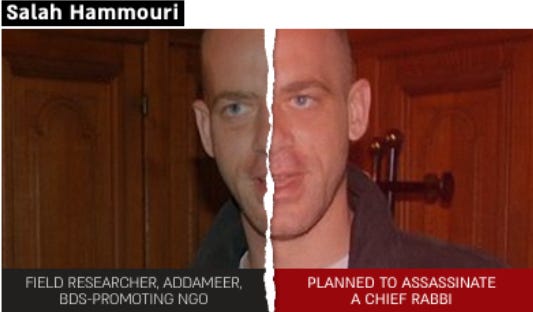
Credit: Terrorists in Suits Report Mustapha Awad: PFLP operative trained by Hezbollah who co-founded the US-based Samidoun, now designated as a terrorist entity, which coordinates with the PFLP to secure the release of Palestinian prisoners and supports BDS; was arrested by Israel in 2018 and sentenced to one year in prison for terror-related activities and facilitating terror funding.
The overlap between designated terrorists and BDS leadership is not coincidental; a National Association of Scholars investigation concluded the BDS network is “a coalition of organizations advocating punitive economic measures against Israel” with “senior operatives from terrorist groups at the helm.”
It was terror ties like these that spurred the donation platform DonorBox to suspend the BDSMovement.net account in 2018.
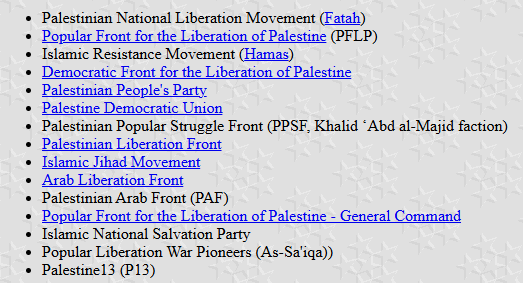
Strategic Convergence: Boycott as “Civilian” Warfare
Internal PNIF communiqués cited in federal court describe BDS as “another form of terror in its quest to remove Israel as a sovereign state”. Hamas’s own politburo has explicitly endorsed economic pressure as a complement to armed resistance, echoing a doctrine popularized by Iranian proxies that blends kinetic attacks with “media jihad” and lawfare.
Academics who track extremist financing argue that BDS functions as reputational warfare: it delegitimizes Israel while expanding political space—and donor networks—for the very factions still firing rockets from Gaza. The terror groups, in turn, supply organizational muscle, disciplined cadres and international alliances that grassroots NGOs alone could not muster.



